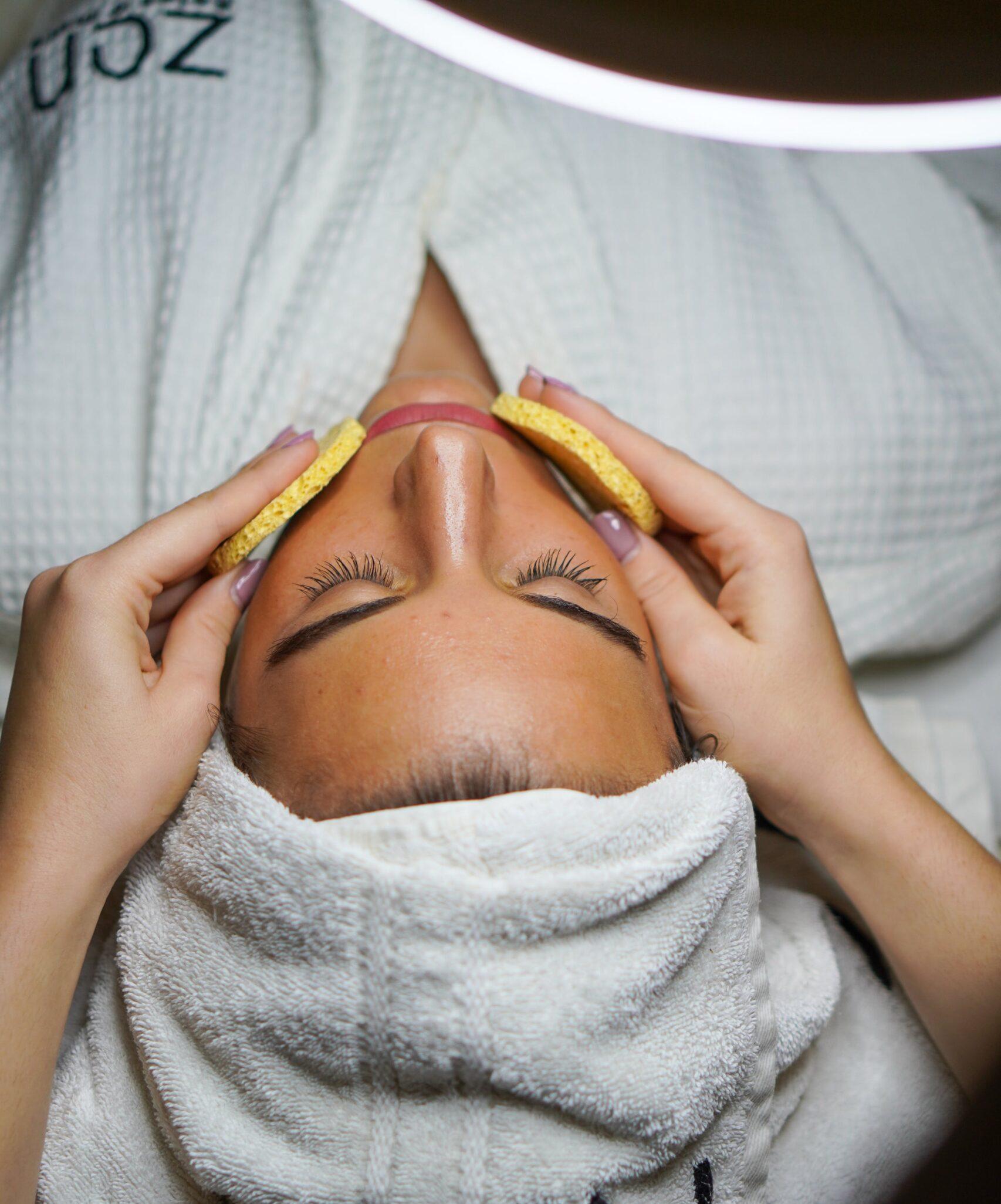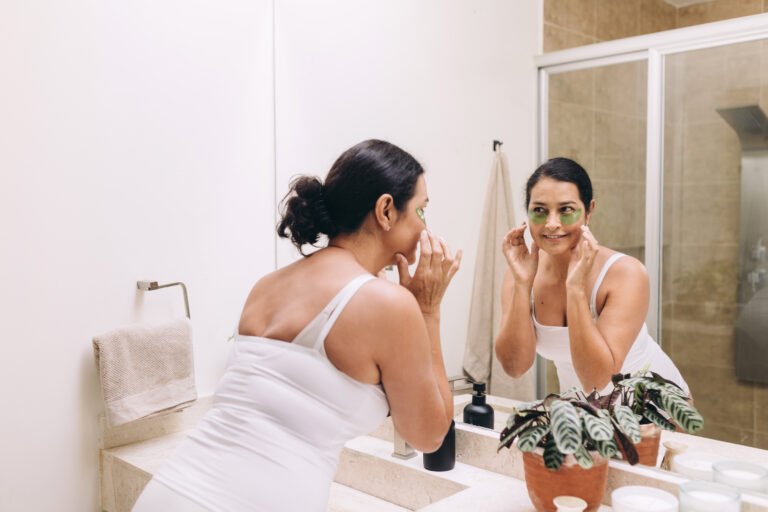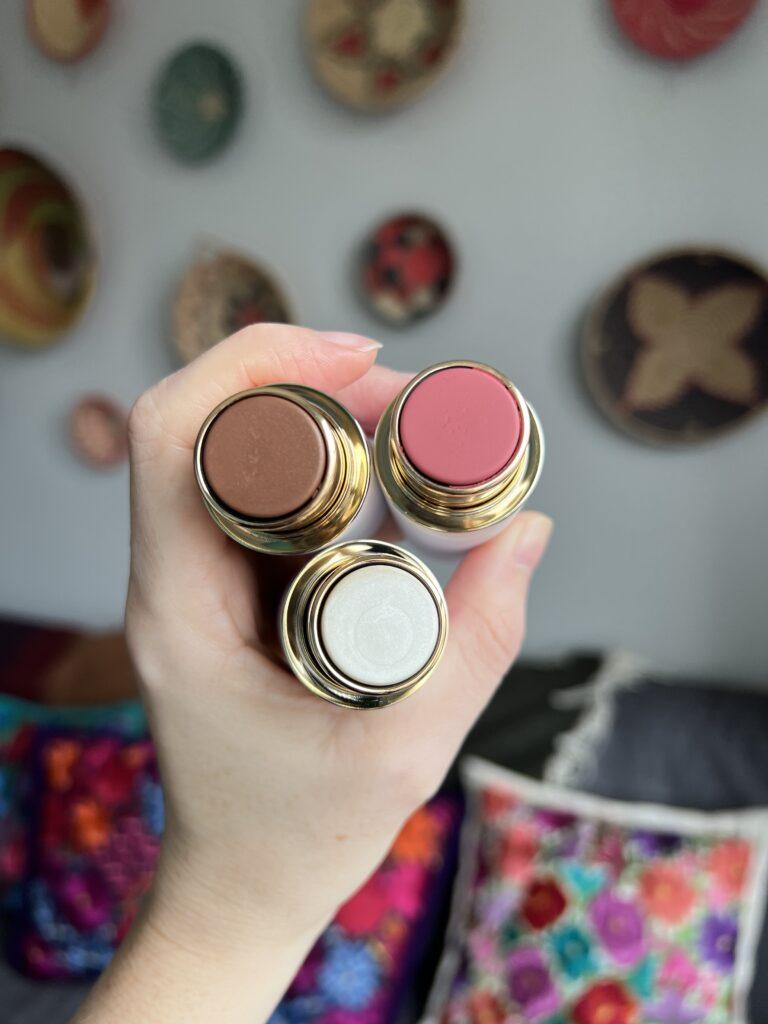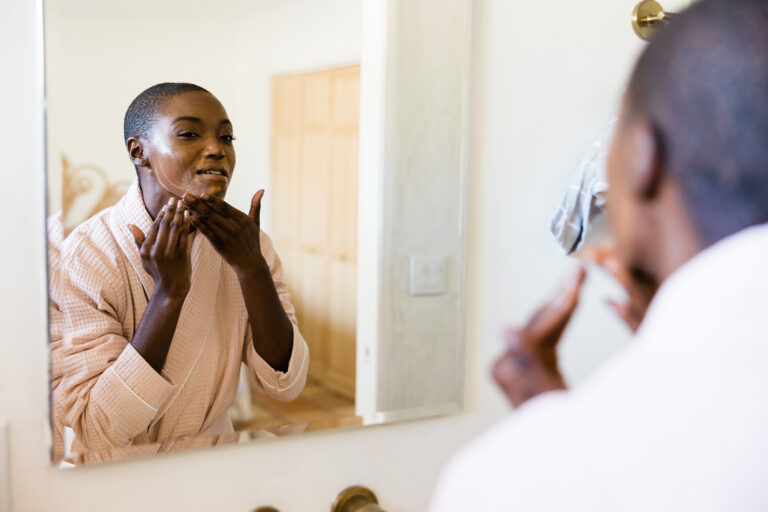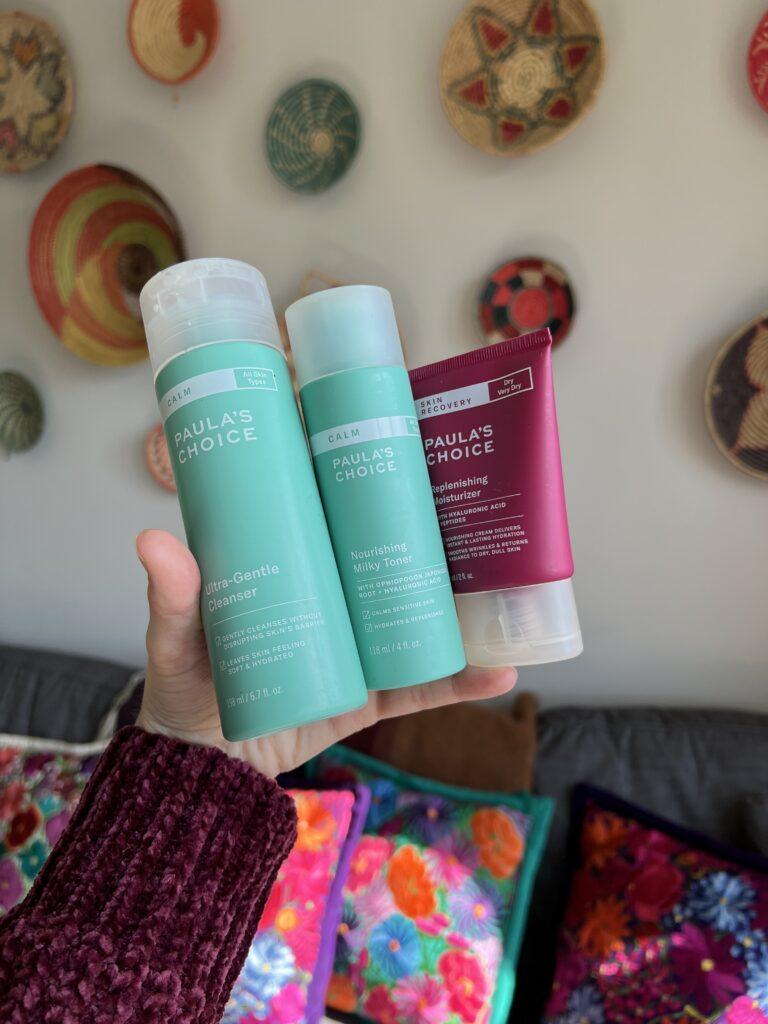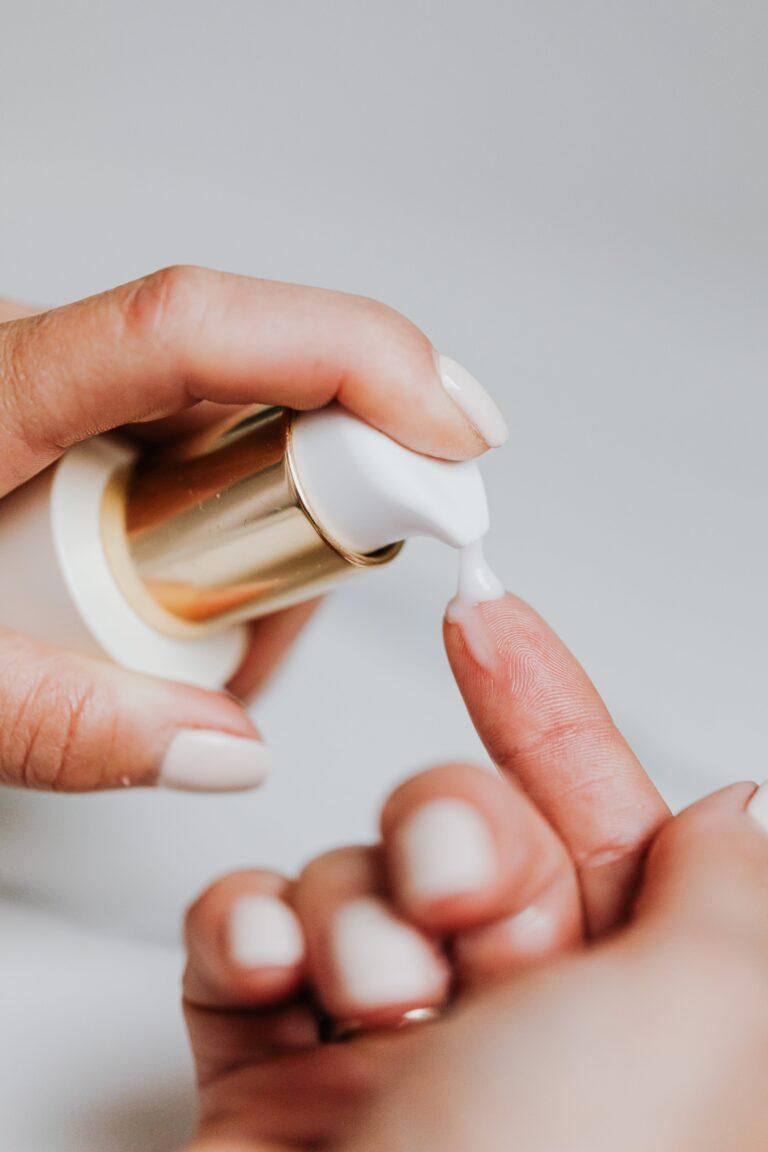Everything You’ve Always Wanted To Know About a PCA Skin Peel
My fear of peels really changed after I tried the PCA Skin Peel years ago at a spa close to my office. The first peel I’d ever gotten was in high school at a Texas dermatologist’s office about 13 years ago. It was some sort of salicylic acid blend that wasn’t from PCA, and caused chunks of my skin to peel off my face for what felt like weeks. I had been terrified of professional peels ever since then.
Thankfully, everything changed when I found an aesthetician that understood how sensitive my skin is. She treated me to the perfect PCA Skin Peel. That was about eight years ago. Since then, I’ve been getting PCA Skin Peels every so often during the year. I love how they benefit my skin in so many ways.
There are a bunch of different types of PCA Skin Peels that you can get at a dermatologist’s office or a spa. Each of these peels offers different skincare benefits. Below, I will cover everything you need to know about getting a PCA Skin Peel—from my personal review, what exactly a PCA Skin Peel is, the different PCA Skin Peel types, and instructions on how to take care of your skin post-peel.
PCA Skin Peel Reviews
I have gotten a bunch of different types of PCA Skin Peels over the years. Thankfully, I had a wonderful experience after each one. I normally tell the dermatologist or esthetician treating my face that I have really sensitive skin. I also suggest that we opt for a lighter peel that isn’t too aggressive.
To be honest, the reason that I decided to try a PCA Skin Peel was because the brand had offered me the treatment as part of my job as a beauty editor. Had that not happened, I probably wouldn’t have tried it. Mainly because I was scarred after my first peel in high school.
What I love about the PCA Skin Peels is that you can notice a difference immediately after your appointment. I always have a slight sheen to my skin post-appointment, and my skin looks pretty glowy and shiny, too. Depending on which PCA Skin Peel I opt for, I typically will see a little bit of shedding and flaking a day or two after my peel. This will normally last for a few days, up to a week. It’s nothing super noticeable—you will probably notice it, but others won’t.
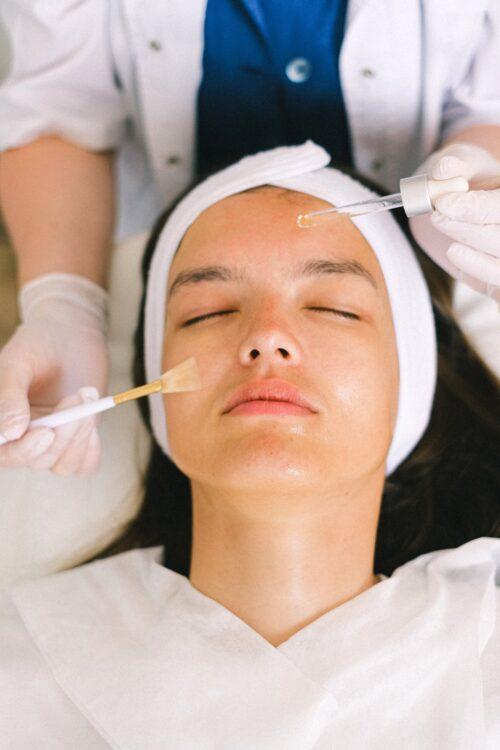
I like to incorporate PCA Skin Peels into my skincare maintenance arsenal. They do a great job of clearing the post-inflammatory hyperpigmentation and dark spots I get from my acne scarring. I also notice a huge difference in the softness and smoothness of my skin after each peel session. Plus, I see a visible difference in pore size, too.
Finally, I notice a huge difference in the sun spots I normally get after a long summer under the sun. I wear baseball caps throughout the summer to cover my face, but sometimes the sun will hit just along my jawline, and I’ll get some brown spots along there. The PCA Skin Peels do a great job of sloughing away that area and getting rid of the brown.
A lot of folks love that these peels reduce the appearance of fine lines and wrinkles. Truth be told, I don’t have a ton of wrinkles these days (thanks, Botox!), so I can’t really speak to whether it helps with my wrinkles or not.
For reference, I would describe my regular regimen as basically a Paula’s Choice skincare routine because I love that brand and many of the products it offers. On a daily basis, I apply many of its toners, serums, and moisturizers to my skin. But when I’m looking for particularly healthy, beautiful skin, I know I need a chemical peel—and PCA is my go-to.
What Is A PCA Peel?
A PCA Skin Peel is a treatment that uses a chemical solution to gently slough off the top layer of skin. To be sure, this process is completely safe and effective. In fact, it helps to regenerate skin cells and promote skin cell turnover. You’ll end up with smoother skin. (Note: When you’re getting a PCA Peel, it’s crucial to ensure that your aesthetician is a PCA Skin certified professional.)
PCA Skin Peels feature multiple different types of chemicals, and the ingredients used on your skin will really depend on your skin concerns. You can expect to see chemicals like beta hydroxy acids, alpha hydroxy acids, and trichloroacetic acids used in PCA Skin Peels. Sometimes, practitioners will use a combination of these chemicals to achieve your desired results. Different chemicals will also determine the depth of the peel and how much your skin will exfoliate and slough off dead skin afterward.
PCA Skin Peel Types
Sensi Peel
I’m pretty sure I’ve gotten this type of peel multiple times. It’s ideal for folks with sensitive skin. You can expect a blend of more gentle acids, including lactic aid, trichloroacetic acid (TCA), and a few others to gently exfoliate your skin.
PCA Peel with Hydroquinone
If you’ve never heard of hydroquinone, it’s a controversial skin-lightening agent that works to target hyperpigmentation and uneven skin tone. I’d say that this is probably one of the stronger peels available from PCA Skin. It contains hydroquinone, lactic acid, kojic acid, salicylic acid, and citric acid.
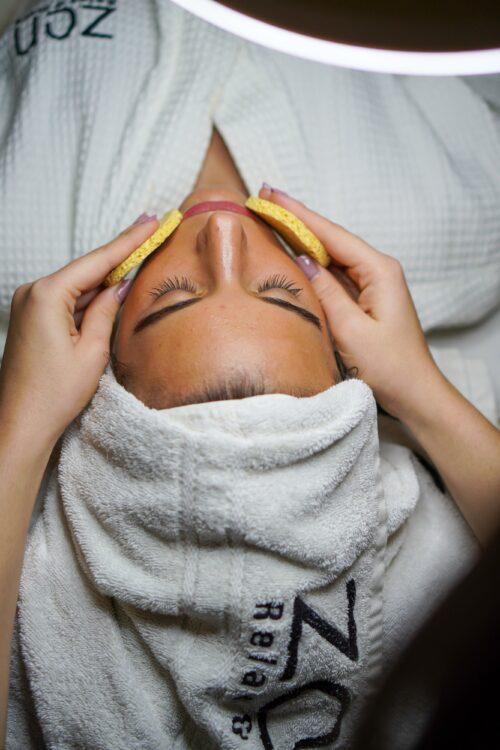
PCA Peel without Hydroquinone
For folks who are looking to improve skin texture and tone without the use of hydroquinone, this one is it. This peel blends lactic acid, kojic acid, salicylic acid, and citric acid to reduce acne, diminish hyperpigmentation, and balance oily skin types.
Ultra Peel I and II
Using both alpha and beta hydroxy acids, these peels combat signs of aging, acne, and uneven texture. More specifically, the Ultra Peel II includes hydroquinone, the lightening agent we discussed, to help brighten your skin.
Smoothing Body Peel
This peel is specifically designed for the body (rather than the facial skin). It addresses concerns like rough skin texture, acne, and discoloration on areas like the back, arms, and legs.
Advanced Treatment Booster
This is not a standalone peel. Estheticians like to use it with other PCA Skin Peels to enhance their effects. With this treatment, you can expect to see ingredients like retinol, niacinamide, and resveratrol—which all help your skin look and feel younger.
Like with other professional treatments, you need to keep in mind your individual skin needs and concerns when choosing a specific PCA Skin Peel—especially if you have a skin condition like eczema or psoriasis. The good news is that a skin professional will perform the peel and assess your skin to recommend the most suitable peel for you.
PCA Skin Peel Instructions
According to Oregon Health and Science University, there are a few things that you need to do before, during and after your PCA peel.
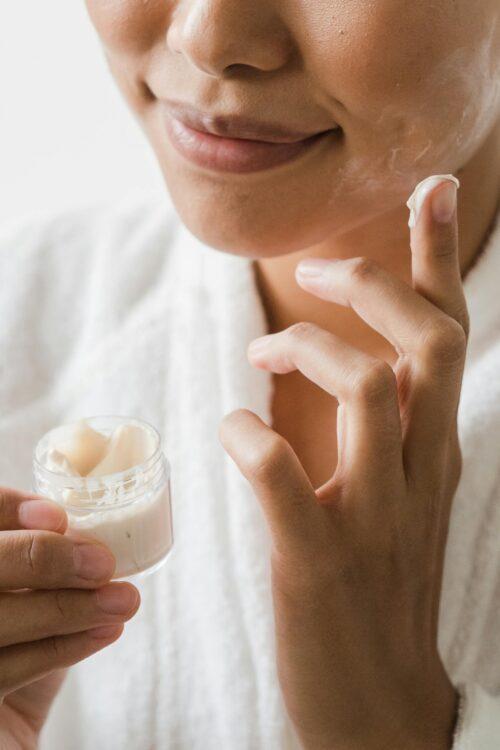
Step 1: Prep your skin.
In the weeks leading up to your PCA peel, you’ll want to properly prep your skin. This primarily involves the use of care products, like moisturizers and sunscreens. While the products can be from the PCA brand, they don’t have to be.
Step 2: Don’t exfoliate.
Sometimes, not doing something also helps you prepare for something. In this instance, one thing you definitely want to avoid doing is exfoliating. That’s because the peel itself will remove a number of layers from your skin. If you exfoliate beforehand, you may very well leave your skin susceptible to unnecessary damage and redness.
Step 3: Stay out of the sun as much as possible.
It’s best to avoid the sun after a chemical peel because your skin is rather sensitive. It’s possible that the sun exposure will irritate your skin, especially if you don’t wear sun protection. If you absolutely have to step out into the sunlight, make sure you slather on your SPF and wear sun-protective clothing like a hat.
Step 4: Stay hydrated.
Often times your skin will feel tight after you get a chemical peel. It helps to be well hydrated before (and after!) your peel as it will help with the tightness. Additionally, having proper hydration will help your skin recover more quickly after the treatment.
Step 5: Keep calm and breathe on.
As someone who’s gotten several peels throughout her life, I have to say that keeping calm is crucial. Some peels can cause your skin to burn, especially those that are as strong as these PCA peels. Just breathe through it and trust that it’s supposed to burn. It’ll be over before you know it.
Step 6: Moisturize your skin.
Again, most peels tend to, well, peel some of your skin off. This is why it’s very important for you to keep your skin moisturized post-treatment. Using serums, moisturizers, and other facial care products is a good way to go. Also, keeping your skin moisturized will help you avoid picking, rubbing, or scratching your skin.


